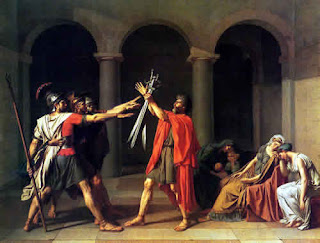Below you will see some paintings that are considered famous and important to the history of painting.
Select the one YOU think is most interesting and describe it in detail on your blog in terms of color, composition, and texture using the terms we've learned in class. Do NOT put the picture in your post. Use its title and the name of the artist and your description skills to "paint" the picture.
Do little research on the painting. Find out who made it and where they are from. What is the painting about?
Then, describe why you chose this painting as the most interesting one and why you think it is considered important to the history of art.

Rites of Spring by Sandro Botticelli


The Persistence of Memory by Salvador Dali


Water Lilies by Claude Monet
American Gothic by Granty Wood

Desmoiselles d'Avignon by Pablo Picasso
Nude Descending a Staircase by Marcel Duchamp































